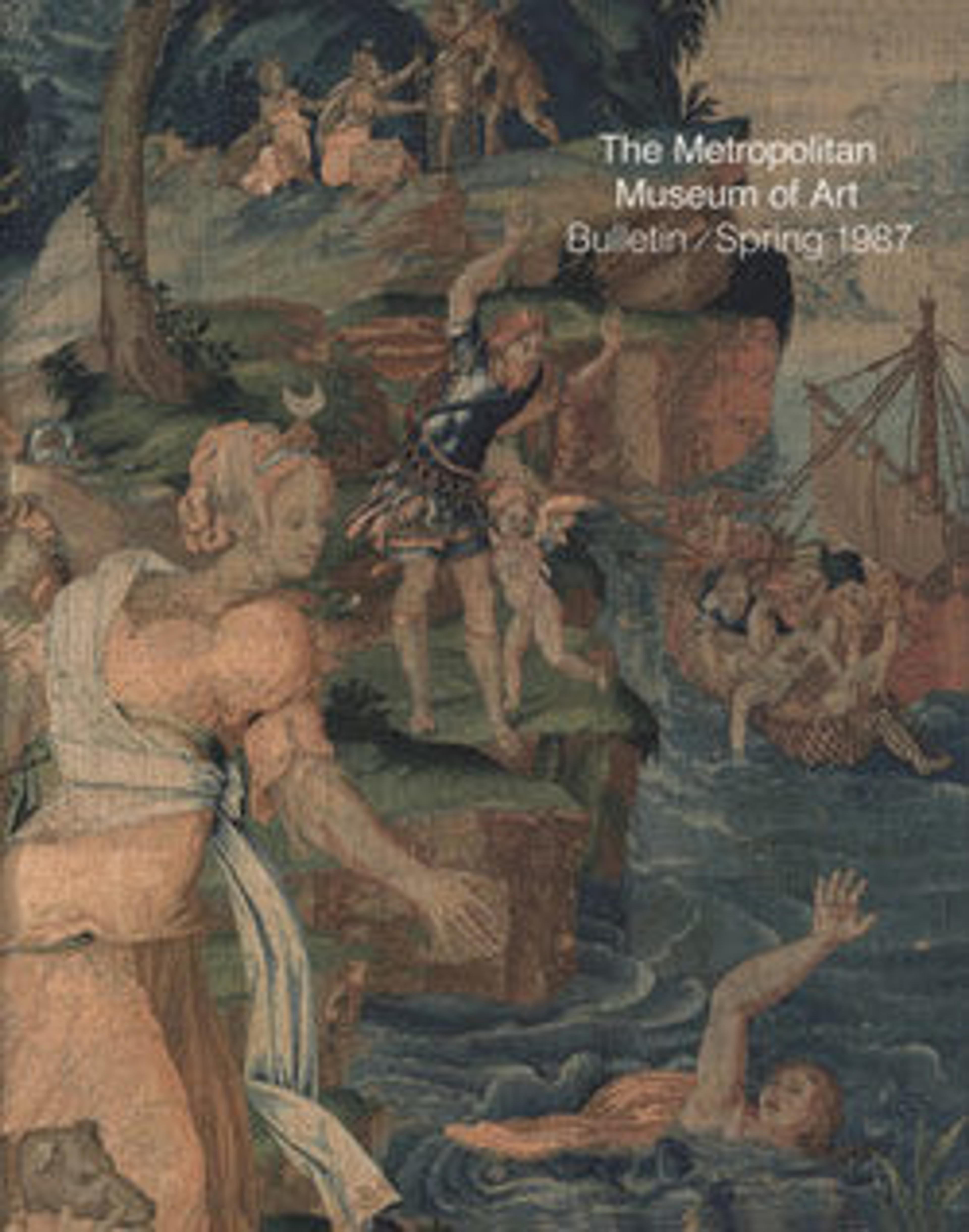Rachel and Bilhah with Dan from The Story of Jacob series
The story of Jacob as depicted in this set of six tapestries (1983.73.1–.6) begins with the scene of Esau selling his birthright to Jacob (Gen. 25:29–34). Esau, the hunter, sits with his bow and quiver at his feet. He clasps hands with Jacob, his brother, who is clad in the starred robe that will identify him throughout the story. By this handshake Esau and Jacob seal their agreement, and the former accepts a bowl of food in exchange for his birthright as firstborn. The secondary scenes represent different moments in time and serve to advance the story. In the center distance Esau is shown hunting with two dogs. To the right, Rebecca, mother of Esau and Jacob, is seen cooking outside the tent, probably preparing food for Jacob to present o his father, Isaac (Gen. 27).
The narrative continues to unfold in the other tapestries, which depict Rachel giving her servant Bilhah to Jacob (Gen. 30:1–4), Rachel and Bilhah with her son Dan, and Jacob making a covenant with his father-in-law
The narrative continues to unfold in the other tapestries, which depict Rachel giving her servant Bilhah to Jacob (Gen. 30:1–4), Rachel and Bilhah with her son Dan, and Jacob making a covenant with his father-in-law
Artwork Details
- Title:Rachel and Bilhah with Dan from The Story of Jacob series
- Date:1550–75
- Culture:Netherlandish, Brussels
- Medium:Wool, silk (18 warps per inch, 6–7 per cm.)
- Dimensions:H. 150 x W. 101 inches (381 x 256.5 cm)
- Classification:Textiles-Tapestries
- Credit Line:Bequest of Amy Warren Patterson, 1981
- Object Number:1983.73.3
- Curatorial Department: European Sculpture and Decorative Arts
More Artwork
Research Resources
The Met provides unparalleled resources for research and welcomes an international community of students and scholars. The Met's Open Access API is where creators and researchers can connect to the The Met collection. Open Access data and public domain images are available for unrestricted commercial and noncommercial use without permission or fee.
To request images under copyright and other restrictions, please use this Image Request form.
Feedback
We continue to research and examine historical and cultural context for objects in The Met collection. If you have comments or questions about this object record, please contact us using the form below. The Museum looks forward to receiving your comments.
